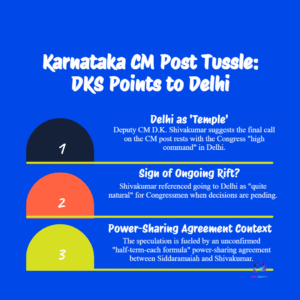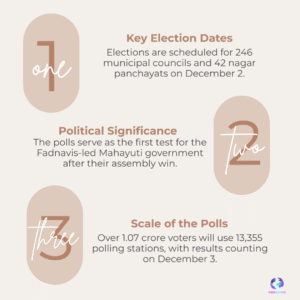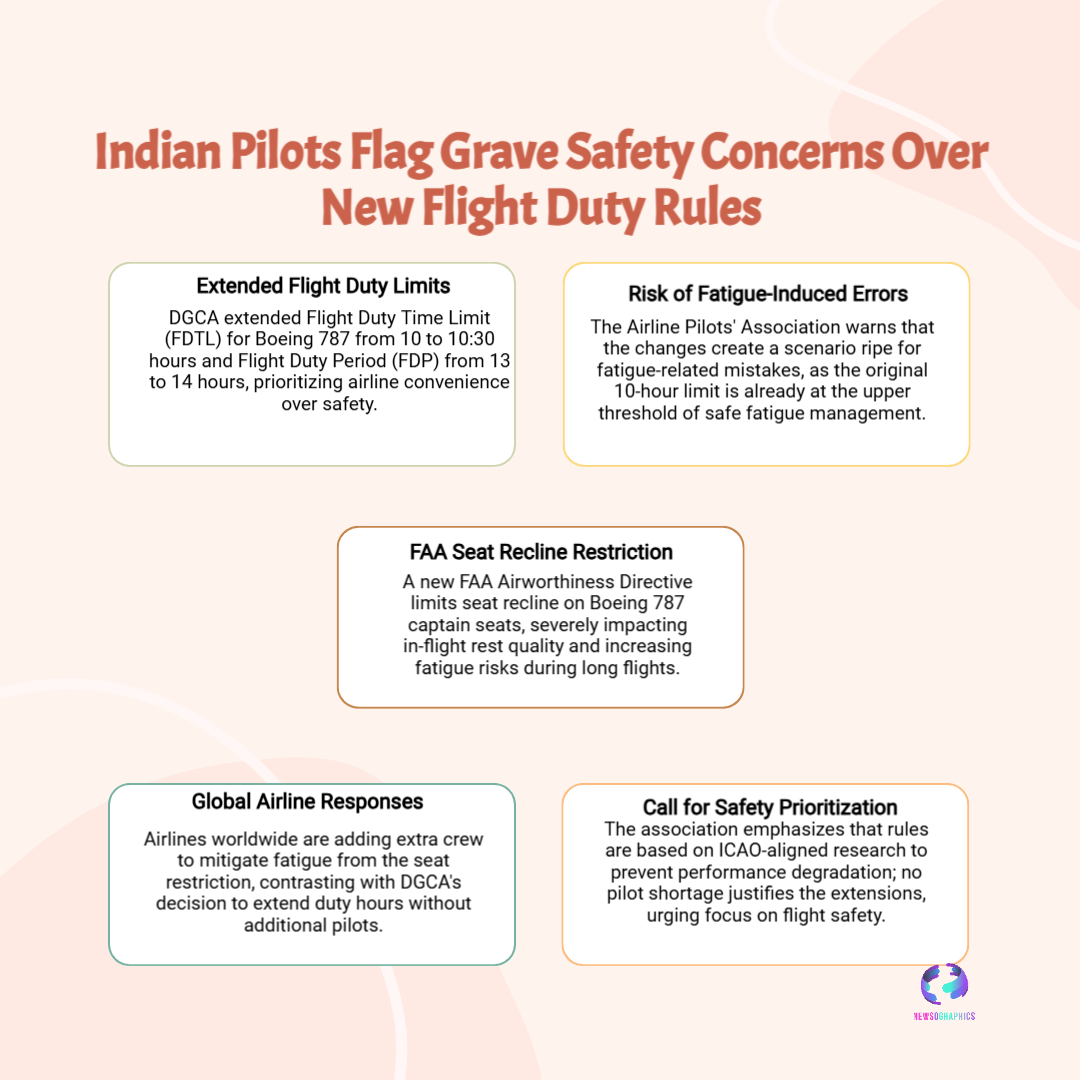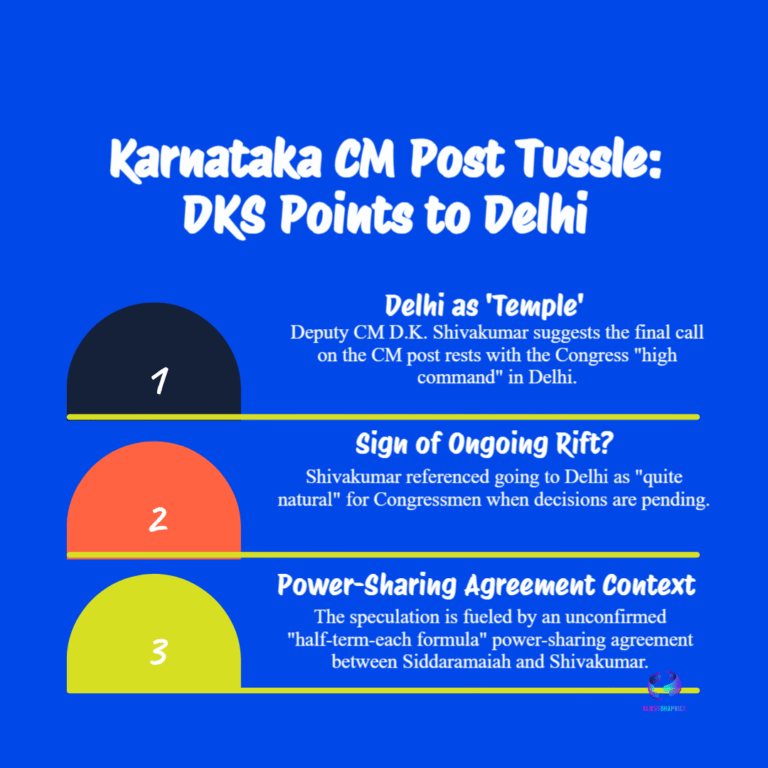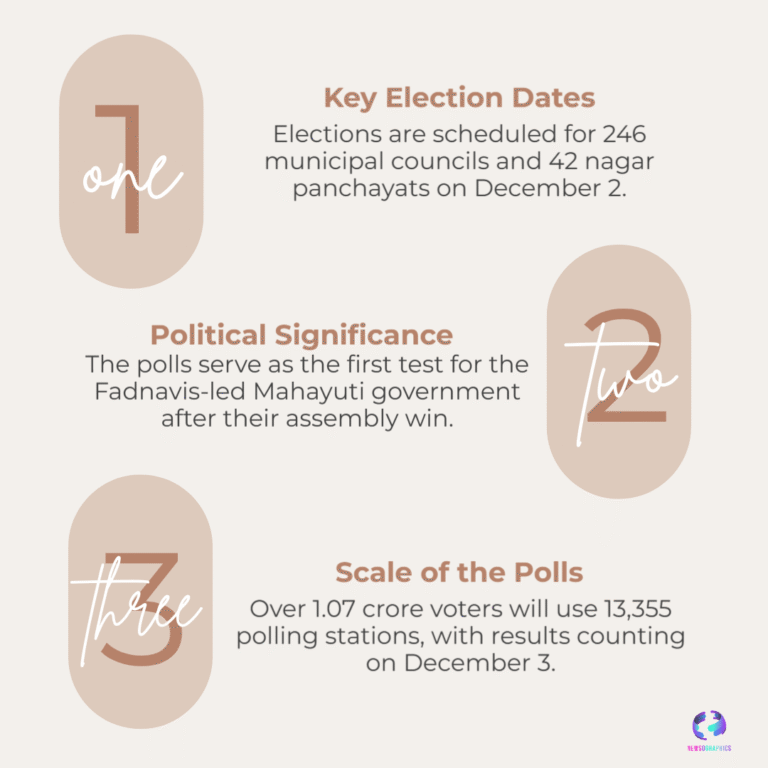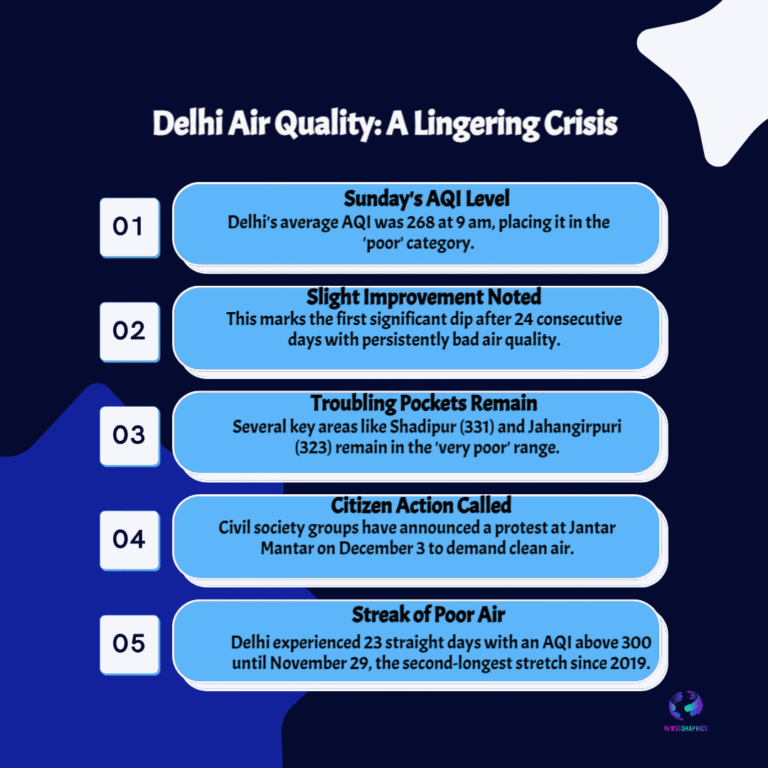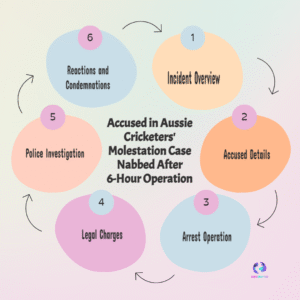Airline Pilots’ Association of India says DGCA’s extension of Flight Duty Time Limits for Boeing 787 two-pilot ops and FAA seat-recline AD raise grave safety and fatigue concerns.
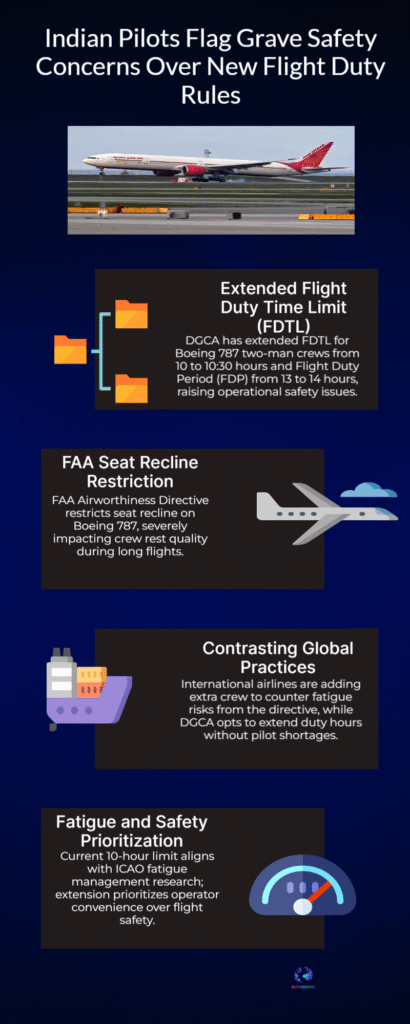
DGCA’s New Flight Duty Time Limit Sparks Safety Row Among Pilots
The Airline Pilots’ Association of India (APAI) has formally raised “grave operational and safety concerns” after the Directorate General of Civil Aviation (DGCA) approved extensions to Flight Duty Time Limits (FDTL) for two-pilot Boeing 787 operations. In a letter seen by media, the pilots’ body warned that increasing duty hours—specifically extending flight time for two-man 787 crews from 10:00 to 10:30 hours and the Flight Duty Period (FDP) from 13:00 to 14:00 hours—directly increases pilot fatigue risk and undermines flight safety management.
Pilots linked the decision to a recent FAA Airworthiness Directive (AD) — FAA-2024-0218 — that restricts the captain’s seat recline on certain Boeing 787s after investigations showed the captain’s seat could move unexpectedly, at times triggering autopilot disconnects and sudden altitude changes. Because seat recline is a crucial part of in-flight rest for long-haul crews, the association argues the FAA-mandated limitation reduces in-flight rest quality and so should have prompted the regulator to tighten, not relax, duty limits. The FAA AD and related inspections were issued after incidents involving uncommanded seat movement on Dreamliners.
APAI emphasised that the original 10-hour flight time cap already sat at the upper threshold of safe fatigue management, based on research underpinning Civil Aviation Requirements (CAR) and ICAO fatigue guidance. Extending duty windows without adding additional crew or compensatory rest, the association says, disregards evidence-based fatigue risk management and appears to prioritise airline convenience over crew performance and passenger safety. Industry observers note that other global carriers have mitigated the seat-recline restriction by rostering extra relief crew on long sectors; pilots say India’s approach diverges from that international mitigation strategy.

